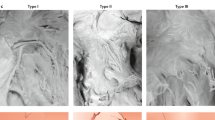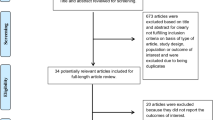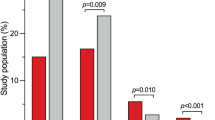Abstract
Reduced cardiac efficiency caused by suboptimal synchronization of the heart's normal contraction might contribute to the development of or exacerbate heart failure. Conceptually and in practice cardiac dyssynchrony is complex. Recent studies have shown that atrio-biventricular pacing can improve cardiac synchrony in many patients and improve cardiac function, symptoms and exercise capacity, and reduce morbidity and mortality substantially. Randomized controlled trials, however, indicate that the severity of cardiac dyssynchrony, as conventionally measured, is a poor guide to treatment benefit and that correction of dyssynchrony accounts for only part of the benefit of atrio-biventricular pacing. Although some of the benefits of atrio-biventricular pacing might be mediated by cardiac resynchronization, much of the benefit could be mediated by mechanisms that are as yet unknown. Withholding atrio-biventricular pacing in patients who do not exhibit cardiac dyssynchrony on imaging but otherwise fulfil the entry criteria used in randomized controlled trials of this therapy could be unwise. Here, we examine the evidence that cardiac resynchronization is indeed the mechanism by which atrio-biventricular pacing exerts its effects.
Key Points
-
Conceptually, cardiac dyssynchrony means that the timing of one or more components of cardiac contraction or relaxation is suboptimal, leading to reduced cardiac efficiency
-
In clinical practice, no concise definition of cardiac dyssynchrony is possible since it varies markedly in type and severity; dyssynchrony is probably continuously distributed and a QRS duration of >120 ms on the surface electrocardiogram is often used as a surrogate marker
-
Types of dyssynchrony include atrio-ventricular, left ventricular, interventricular or papillary-muscle contraction
-
Atrio-biventricular pacing improves cardiac function, symptoms and exercise capacity, and reduces morbidity and mortality
-
In some patients atrio-biventricular pacing can be combined with an implantable cardioverter-defibrillator to increase protection against sudden death
-
Whether cardiac dyssynchrony and resynchronization explain all, or indeed most, of the benefits of atrio-biventricular pacing is not yet clear
This is a preview of subscription content, access via your institution
Access options
Similar content being viewed by others
References
Freemantle N et al. (2006) Cardiac resynchronization for patients with heart failure due to left ventricular systolic dysfunction: a systematic review and meta-analysis. Eur J Heart Fail 8: 433–440
Cleland JGF and Clark AL (2003) Delivering the cumulative benefits of triple therapy for heart failure: too many cooks will spoil the broth. J Am Coll Cardiol 42: 1226–1233
Cleland JGF et al. (2005) Clinical trials update from the American College of Cardiology meeting: CARE-HF and the Remission of Heart Failure, Women's Health Study, TNT, COMPASS-HF, VERITAS, CANPAP, PEECH and PREMIER. Eur J Heart Fail 7: 931–936
Cleland JGF et al. (2006) Longer-term effects of cardiac resynchronization therapy on mortality in heart failure [the Cardiac Resynchronization-Heart Failure (CARE-HF) trial extension phase]. Eur Heart J 27: 1928–1932
Cleland JGF et al. Cardiac Resynchronization—Heart Failure (CARE-HF) Study Investigators (2005) The effect of cardiac resynchronization on morbidity and mortality in heart failure. New Engl J Med 352: 1539–1549
Bristow MR et al. Comparison of Medical Therapy Pacing and Defibrillation in Heart Failure (COMPANION) Investigators (2004) Cardiac-resynchronization therapy with or without an implantable defibrillator in advanced chronic heart failure. New Engl J Med 350: 2140–2150
Spragg DD and Kass DA (2006) Pathobiology of left ventricular dyssynchrony and resynchronization. Prog Cardiovasc Dis 49: 26–41
Chattopadhyay S et al. (2006) Apex to base dyssynchrony in left ventricular systolic dysfunction [abstract]. Eur Heart J 27 (Suppl): aP4808
Cazeau S et al.; Multisite Stimulation in Cardiomyopathies (MUSTIC) Study Investigators. (2001) Effects of multisite biventricular pacing in patients with heart failure and intraventricular conduction delay. New Engl J Med 344: 873–880
Abraham WT et al. MIRACLE Study Group (2002) Multicenter InSync Randomized Clinical Evaluation: cardiac resynchronisation in chronic heart failure. N Engl J Med 346: 1845–1853
Young J et al. Multicenter InSync ICD Randomized Clinical Evaluation (MIRACLE ICD) Trial Investigators (2003) Combined cardiac resynchronisation and implantable cardioversion defibrillation in advanced chronic heart failure: the MIRACLE ICD trial. JAMA 289: 2685–2694
Higgins SL et al. (2003) Cardiac resynchronisation therapy for the treatment of heart failure in patients with intraventricular conduction delay and malignant ventricular tachyarrhythmias. J Am Coll Cardiol 42: 1454–1459
Abraham WT et al. Multicenter InSync ICD II Study Group (2004) Effects of cardiac resynchronization on disease progression in patients with left ventricular systolic dysfunction, an indication for an implantable cardioverter-defibrillator, and mildly symptomatic chronic heart failure. Circulation 110: 2864–2868
Bradley DJ et al. (2003) Cardiac resynchronization and death from progressive heart failure: a meta-analysis of randomized controlled trials. JAMA 289: 730–740
Moss AJ et al. Multicenter Automatic Defibrillator Implantation Trial II Investigators (2002) Prophylactic implantation of a defibrillator in patients with myocardial infarction and reduced ejection fraction. N Engl J Med 346: 877–883
Carson P et al. (2005) Mode of death in advanced heart failure: the Comparison of Medical, Pacing, and Defibrillation Therapies in Heart Failure (COMPANION) Trial. J Am Coll Cardiol 46: 2329–2334
Fish JM et al. (2005) Potential proarrhythmic effects of biventricular pacing. J Am Coll Cardiol 46: 2340–2347
Cleland JGF et al. (2004) Can cardiac-resynchronization therapy reduce mortality in patients suffering from advanced chronic heart failure? Nat Clin Pract Cardiovasc Med 1: 10–11
Cleland JGF et al. CARE-HF Study Steering Committee and Investigators (2001) Design and methodology of the CARE-HF trial: a randomised trial of cardiac resynchronisation in patients with heart failure and ventricular dyssynchrony. Eur J Heart Fail 3: 481–489
Cleland JG et al. CARE-HF Study Steering Committee and Investigators (2005) Baseline characteristics of patients recruited into the CARE-HF study. Eur J Heart Fail 7: 205–214
Cleland JGF et al. (2006) The effect of CRT on the pharmacological treatment of patients with heart failure and cardiac dyssynchrony [abstract]. Eur J Heart Fail 5 (Suppl 1): S-170
Cleland JGF et al. on behalf of the TEN-HMS investigators (2005) Noninvasive home telemonitoring for patients with heart failure at high risk of recurrent admission and death: the Trans-European Network-Home-Care Management System (TEN-HMS) Study. J Am Coll Cardiol 45: 1654–1664
Swedberg K et al. for the CONSENSUS trial study group (1987) Effects of enalapril on mortality in severe congestive heart failure: results of the Cooperative North Scandinavian Enalapril Survival Study (CONSENSUS). N Engl J Med 316: 1429–1435
Ermis C et al. (2005) Impact of upgrade to cardiac resynchronization therapy on ventricular arrhythmia frequency in patients with implantable cardioverter-defibrillators. J Am Coll Cardiol 46: 2258–2263
Cleland JGF (2006) Cardiac resynchronisation is effective for patients with mild symptoms of heart failure [abstract]. Eur J Heart Fail 5 (Suppl 1): S-20
Cleland JGF et al. for the PEP-CHF investigators (2006) Prognostic significance of NTproBNP in patients with a clinical diagnosis of heart failure and preserved left ventricular systolic function [abstract # 1415]. Eur Heart J 27 (Suppl): 215
Cleland JGF et al. PEP-CHF Investigators (2006) The perindopril in elderly people with chronic heart failure (PEP-CHF) study. Eur Heart J 27: 2338–2345
Banerjee P et al. (2004) Diastolic heart failure: paroxysmal or chronic? Eur J Heart Fail 6: 427–431
Banerjee P et al. (2002) Diastolic heart failure—neglected or misdiagnosed? J Am Coll Cardiol 39: 138–141
Ghio S et al. (2004) Interventricular and intraventricular dyssynchrony are common in heart failure patients, regardless of QRS duration. Eur Heart J 25: 571–578
Reynolds MR et al. for the MIRACLE ICD Investigators (2004) Relationship of baseline electrocardiographic characteristics with the response to cardiac resynchronization therapy for heart failure. Pacing Clin Electrophysiol 27: 1513–1518
Leclercq C et al. (2002) Comparative effects of permanent biventricular and right-univentricular pacing in heart failure patients with chronic atrial fibrillation. Eur Heart J 23: 1780–1787
Hoppe UC et al. (2006) Effect of cardiac resynchronization on the incidence of atrial fibrillation in patients with severe heart failure. Circulation 114: 18–25
Freemantle N et al. (2005) Predictors of response to cardiac resynchronisation therapy: results from the CARE-HF trial [abstract]. Circulation 112 (Suppl II): a672
Adamson PB et al. (2002) Echo-defined ventricular dyssynchrony predicts magnitude of response to cardiac resynchronisation [abstract]. J Cardiac Failure 8 (Suppl): aS50
Marcus GM et al. VENTAK CHF/CONTAK-CD Biventricular Pacing Study Investigators (2005) Septal to posterior wall motion delay fails to predict reverse remodeling or clinical improvement in patients undergoing cardiac resynchronization therapy. J Am Coll Cardiol 46: 2208–2214
Yu CM et al. PROSPECT Investigators (2005) Predictors of response to cardiac resynchronization therapy (PROSPECT)—study design. Am Heart J 149: 600–605
Bleeker GB et al. (2006) Effect of posterolateral scar tissue on clinical and echocardiographic improvement after cardiac resynchronization therapy. Circulation 113: 969–976
Cleland JGF et al. Carvedilol Hibernating Reversible Ischaemia Trial: Marker of Success Investigators (2003) Myocardial viability as a determinant of the ejection fraction response to carvedilol in patients with heart failure (CHRISTMAS trial): randomised controlled trial. Lancet 362: 14–21
Hummel JP et al. (2005) Extent of myocardial viability predicts response to biventricular pacing in ischemic cardiomyopathy. Heart Rhythm 2: 1211–1217
Chattopadhyay S et al. (2005) Prevalence of intraventricular dyssynchrony increases with stress [abstract]. Circulation 112 (Suppl): II–403
Dalle Mule J et al. (2003) Beneficial effects of carvedilol in patients with ischaemic cardiomyopathy and a 'narrow' QRS: results of the CHRISTMAS study [abstract]. Circulation 108 (Suppl): IV–369
Herman MV et al. (1967) Localised disorders in myocardial contraction: asynergy and its role in congestive heart failure. New Engl J Med 277: 222–232
Shamim W et al. (2002) Incremental changes in QRS duration in serial ECGs over time identify high risk elderly patients with heart failure. Heart 88: 47–52
Knight BP et al. (2004) Long-term retention of cardiac resynchronization therapy. J Am Coll Cardiol 44: 72–77
Cleland JGF et al. (2006) Predicting the long-term effects of cardiac resynchronisation and the early response. A report from CARE-HF (Cardiac Resynchronisation in Heart Failure) [abstract # 1221]. EUR Heart J 27 (Suppl): 177
Tse H-F et al. (2005) The incremental benefit of rate-adaptive pacing on exercise performance during cardiac resynchronization therapy. J Am Coll Cardiol 46: 2292–2297
Leon AR et al.; InSync III Clinical Study Investigators (2005) Cardiac resynchronization with sequential biventricular pacing for the treatment of moderate-to-severe heart failure. J Am Coll Cardiol 46: 2298–2304
Cleland JGF et al. InSync III Clinical Study Investigators (2001) Cardiovascular critical event pathways for the progression of heart failure: a report from the ATLAS study. Eur Heart J 22: 1601–1612
Cleland JGF et al. (1999) Sudden death in heart failure: vascular or electrical? Eur J Heart Fail 1: 41–45
Cleland JGF et al. (2004) Clinical trials update and cumulative meta-analyses from the American College of Cardiology: WATCH, SCD-HeFT, DINAMIT, CASINO, INSPIRE, STRATUS-US, RIO-LIPIDS and cardiac resynchronisation therapy in heart failure. Eur J Heart Fail 6: 501–508
Feldman A et al. (2005) Cost effectiveness of cardiac resynchronization therapy in the Comparison of Medical Therapy, Pacing, and Defibrillation in Heart Failure (COMPANION) Trial. J Am Coll Cardiol 46: 2311–2321
Calvert MJ et al. CARE-HF Investigators (2005) Cost-effectiveness of cardiac resynchronisation therapy: results from the CARE-HF trial. Eur Heart J 26: 2681–2688
Yao G et al. (2006) The long-term cost-effectiveness of cardiac resynchronization therapy with or without an implantable cardioverter-defibrillator. Eur Heart J [doi:10.1093/eurheartj/ehl382]
Moss AJ et al. (2005) Multicenter Automatic Defibrillator Implantation Trial-Cardiac Resynchronization Therapy (MADIT-CRT): design and clinical protocol. Ann Noninvasive Electrocardiol 10: 34–43
Bardy GH et al. Sudden Cardiac Death in Heart Failure Trial (SCD-HeFT) Investigators (2005) Amiodarone or an implantable cardioverter-defibrillator for congestive heart failure. N Engl J Med 352: 225–237
Linde C et al. REVERSE study group (2006) Rationale and design of a randomized controlled trial to assess the safety and efficacy of cardiac resynchronization therapy in patients with asymptomatic left ventricular dysfunction with previous symptoms or mild heart failure—the REsynchronization reVErses Remodeling in Systolic left vEntricular dysfunction (REVERSE) study. Am Heart J 151: 288–294
Adamson PB et al. InSync III Model 8042 and Attain OTW Lead Model 4193 Clinical Trial Investigators (2004) Continuous autonomic assessment in patients with symptomatic heart failure. Circulation 110: 2389–2394
Fantoni C et al. (2005) Cardiac resynchronization therapy improves heart rate profile and heart rate variability of patients with moderate to severe heart failure. J Am Coll Cardiol 46: 1875–1882
Braunschweig F et al. (2002) Continuous haemodynamic monitoring during withdrawal of diuretics in patients with congestive heart failure. Eur Heart J 23: 59–69
McAlister FA et al. (2004) Systematic review: cardiac resynchronization in patients with symptomatic heart failure. Ann Intern Med 141: 381–390
Linde C et al. (2002) Long-term benefits of biventricular pacing in congestive heart failure: results from the MUltisite STimulation in cardiomyopathy (MUSTIC) study. J Am Coll Cardiol 40: 111–118
Acknowledgements
The authors would like to thank Gillie Porter for her assistance in the preparation of this manuscript.
Author information
Authors and Affiliations
Corresponding author
Ethics declarations
Competing interests
JGF Cleland has received research funding from Medtronic for the conduct of research and receives an honorarium for work connected with the CARE-HF study. He has received speaker's honoraria from Medtronic and Guidant.
M Nasir and A Tageldien declared they have no competing interests.
Rights and permissions
About this article
Cite this article
Cleland, J., Nasir, M. & Tageldien, A. Cardiac resynchronization therapy or atrio-biventricular pacing—what should it be called?. Nat Rev Cardiol 4, 90–101 (2007). https://doi.org/10.1038/ncpcardio0794
Received:
Accepted:
Issue Date:
DOI: https://doi.org/10.1038/ncpcardio0794
This article is cited by
-
Cardiac resynchronization therapy is certainly cardiac therapy, but how much resynchronization and how much atrioventricular delay optimization?
Heart Failure Reviews (2012)
-
How to improve outcomes: should we put more emphasis on programming and medical care and less on patient selection?
Heart Failure Reviews (2012)
-
The determinants of clinical outcome and clinical response to CRT are not the same
Heart Failure Reviews (2012)
-
Defibrillators—a shocking therapy for cardiomyopathy?
Nature Reviews Cardiology (2010)





